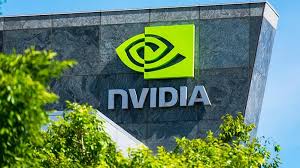Nvidia's Trajectory: A Data-Driven Analysis of Insider Activity and Market Valuations

Beyond the Rhetoric: A Quantitative Examination of Nvidia’s Market Position
In the heated discourse surrounding Nvidia's recent market performance, rhetoric has often displaced reality. The public conversation, driven by sensational headlines, has coalesced around two primary narratives: the allegedly ominous signal of executive stock sales and the historically fraught comparison to Cisco Systems at the peak of the dot-com bubble. This analysis will set aside the emotional speculation and market sentimentality to conduct a clear-eyed examination of what the available data—drawn from SEC filings, historical market performance, and fundamental business metrics—actually tells us about Nvidia's current valuation and future prospects.
An Empirical Review of Executive Stock Dispositions
A primary point of concern, amplified by numerous financial media outlets, involves over $1 billion in stock sold by Nvidia executives, including CEO Jensen Huang. The prevailing interpretation frames these sales as a vote of no confidence from the very individuals with the most insight into the company's future. However, a granular analysis of the data reveals a more complex and far more mundane reality.
A significant portion of these executive stock sales are executed under SEC Rule 10b5-1. These are pre-arranged trading plans that allow insiders of publicly-traded corporations to set up a predetermined schedule for selling their stock holdings. These plans are established when the insider is not in possession of material non-public information, providing an affirmative defense against accusations of insider trading. The use of 10b5-1 plans indicates not a sudden loss of faith, but a structured, long-term approach to personal asset management.
Furthermore, the headline figure, while large in absolute terms, must be contextualized relative to total holdings. The reported sales constitute a statistically minor fraction—typically in the low single-digit percentages—of the executives' total vested ownership in the company. For senior executives whose personal wealth is overwhelmingly concentrated in a single, high-growth stock, periodic, planned diversification is a standard and financially prudent practice. It addresses personal financial goals, tax liabilities, and philanthropic commitments. To interpret this routine financial planning as a bearish signal on the company's multi-year outlook is to misread the data, substituting narrative for statistical significance.
Fundamental Divergence: A Comparative Analysis of Nvidia (2024) vs. Cisco (2000)
The second narrative threat—the comparison of Nvidia to Cisco circa 2000—is a powerful historical analogy that crumbles under direct statistical and fundamental scrutiny. While both companies experienced meteoric stock appreciation fueled by a technological revolution, the underlying economics of their businesses and market positions are fundamentally divergent.
-
Valuation and Profitability: At its zenith in March 2000, Cisco traded at a price-to-earnings (P/E) ratio exceeding 150. In stark contrast, Nvidia’s forward P/E ratio currently stands in the 35-40 range. This is a valuation that, while high, is grounded in actual and projected earnings growth, not speculative fervor. Moreover, Nvidia’s current gross margins are in the high 70s percentile, a figure reflective of a company with immense pricing power derived from a unique product. Cisco, primarily a hardware vendor in a competitive networking space, did not possess comparable profitability metrics.
-
The Economic Moat: Cisco sold routers and switches—essential, but ultimately commoditizable, hardware. Its competitive advantage was in execution and market share, not in a deeply embedded, high-switching-cost ecosystem. Nvidia’s primary moat is not its GPU hardware alone, but its CUDA (Compute Unified Device Architecture) software platform. With over four million developers globally and an ecosystem built over nearly two decades, CUDA creates a powerful lock-in effect. Migrating complex AI models and workflows off the CUDA platform to a competing architecture is a technically complex and financially prohibitive undertaking. This integrated hardware-software stack has no direct parallel in the Cisco of 2000.
-
Nature of Demand: Demand for Cisco’s products was driven by the speculative build-out of internet infrastructure for a generation of dot-com companies that had negligible revenue and unproven business models. When that bubble burst, the demand evaporated. Nvidia’s core demand today comes from a small number of the most profitable companies in the world—the cloud hyperscalers (Amazon, Microsoft, Google, Meta)—which use its technology to power tangible, high-margin AI services. This is a consolidated, rational, and revenue-driven customer base. Furthermore, the emergence of a new demand driver, 'Sovereign AI'—wherein nations are investing billions to build their own AI infrastructure—provides a distinct, government-backed revenue stream that is decoupled from enterprise tech spending cycles. This emerging market, projected by some analysts to be a multi-hundred-billion-dollar opportunity, further insulates Nvidia from the type of demand collapse that afflicted Cisco.
Conclusion: An Interpretation Based on Evidence
A dispassionate analysis of the quantitative evidence leads to a series of logical conclusions that stand in opposition to the prevailing alarmist narratives:
- Executive stock sales are consistent with pre-scheduled, long-term financial planning and represent a small fraction of total insider holdings, rather than a signal of weakening confidence.
- The analogy to Cisco (2000) is fundamentally flawed, failing to account for vast differences in valuation multiples, profitability, and the structural nature of the competitive moat (hardware vs. an integrated software/hardware ecosystem).
- Current and future demand is anchored by a stable base of highly profitable hyperscale clients and is expanding into new, durable markets such as Sovereign AI, providing a clear and quantifiable path for sustained growth.
When stripped of emotional framing and examined through a purely data-centric lens, the case against Nvidia weakens substantially. The available evidence does not suggest a company on the precipice of a historical collapse, but rather one whose valuation is a rational reflection of its entrenched market leadership, unprecedented profitability, and a clear roadmap for expansion into the core technological infrastructure of the 21st century.